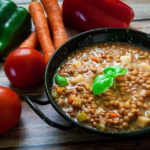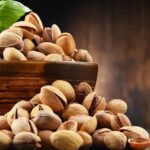Introduction: When strolling through the aisles of a supermarket and picking up an assortment of nuts, it’s not uncommon to discover fava beans or chickpeas among the mix – a surprising revelation for some, as these are legumes. Yet, hidden in plain sight among these products is a so-called nut that Spaniards consume without realizing it belongs to the legume family.
Meet the peanuts, a highly nutritious food that boasts more protein than eggs and is rich in “good fats,” vitamins, minerals, and fiber. Despite its low water content, similar to traditional nuts, peanuts fall under the legume or fabaceae family, challenging the conventional notion of nuts.
Legume vs. Nut: While the nutritional values align closely with those of traditional nuts, categorizing peanuts as such is inaccurate. Current allergen labeling regulations distinguish peanuts from other nuts due to allergy concerns. The European Union Regulation No. 1169/2011 specifies what foods are considered nuts (almonds, walnuts, pecans, cashews, pistachios, Macadamia nuts, etc.) and places peanuts in a separate category as legumes.
Distinct Culinary Uses: Peanuts differ significantly from beans, lentils, or peas in their culinary applications. Despite being pod fruits like other legumes, peanuts share little in common with true nuts. A stark example of their culinary divergence is their limited use in Western pastry, where other nuts are more prevalent. However, peanut creams and peanut oil are staples in various global cuisines, a contrast to their limited use in Western baking.
Allergen Considerations: Packaged products typically include allergen information, separating peanuts from tree nuts due to allergy concerns. It is crucial to be aware of these distinctions for those with allergies or dietary restrictions. The awareness of peanut allergens is vital in preventing cross-contamination and ensuring the safety of individuals with allergies.
Health Benefits of Peanuts: Now that we’ve clarified that peanuts are legumes rather than nuts, let’s delve into their exceptional health benefits. Peanuts are rich in vitamin B3, folic acid, and proteins (26%), making them the most calorically dense nuts at 571 calories per 100 grams. Their high content of monounsaturated (58%) and polyunsaturated (26%) fats helps regulate cholesterol levels.
Peanuts also contain abundant fiber, minerals such as zinc, nickel, phosphorus, magnesium, and iron, along with vitamins E and B group, especially when consumed raw. The arginine-rich proteins in peanuts aid in hormone production, supporting growth and maintaining the nervous and immune systems. Additionally, the amino acid tryptophan, found in peanuts, is essential for serotonin production, promoting mood improvement and better sleep.
Traditional Chinese Medicine Perspective: Traditional Chinese Medicine (TCM) recognizes the peanut’s holistic qualities, attributing it a sweet taste or earth element. TCM views peanuts as capable of lubricating the intestines, harmonizing the stomach, and regulating the lungs and spleen-pancreas. In China, peanut shells are used in infusions to lower blood pressure. While the Western perspective often focuses on the chemical components, TCM emphasizes the overall impact on the body and mind.
Versatility in Culinary Usage: Peanuts showcase remarkable versatility in the kitchen. They can be enjoyed as snacks, used as thickeners, or added to stews and soups for enrichment. In the United States, peanut butter enjoys widespread popularity, while in Indonesia, peanuts are crushed and incorporated into salads or sauce preparations.
Peanut oil finds frequent use in fish preservation and Asian cuisine, as well as in some European countries where olive oil availability is limited. With a neutral taste that doesn’t alter the flavor of dishes, peanut oil is ideal for high-heat stir-frying in woks.
Conclusion: In conclusion, peanuts, the legumes posing as nuts in Spain, offer a nutritional powerhouse with a range of health benefits. By understanding their true nature, culinary applications, and distinctiveness from traditional nuts, individuals can make informed choices in their diets. From a savory snack to an essential ingredient in global cuisines, peanuts stand out as a versatile and nutrient-rich addition to the culinary world. Embrace the peanut, not just as a tasty treat, but as a nutritional ally in promoting overall well-being.
Keywords: peanuts, legumes, nutrition, health benefits, culinary uses, traditional Chinese medicine, allergens, versatile ingredient, peanut oil, protein-rich, vitamins, minerals, fiber, serotonin production.













